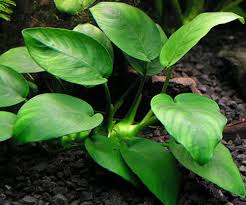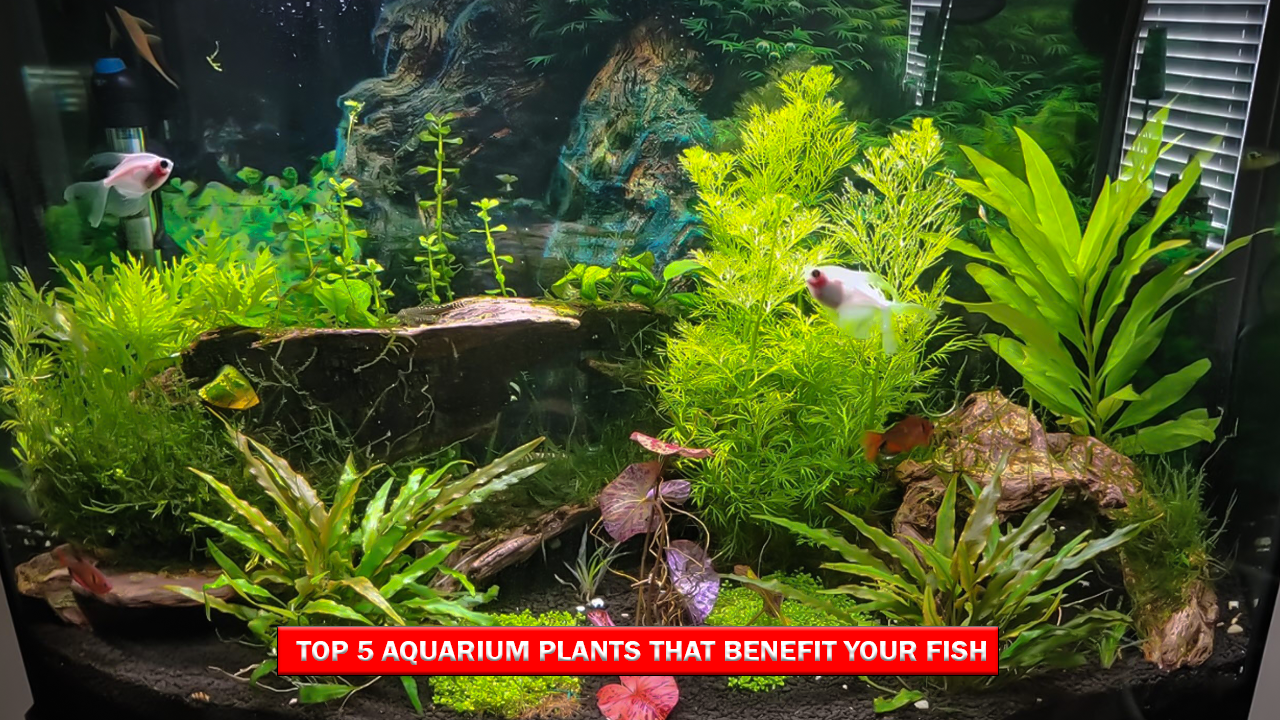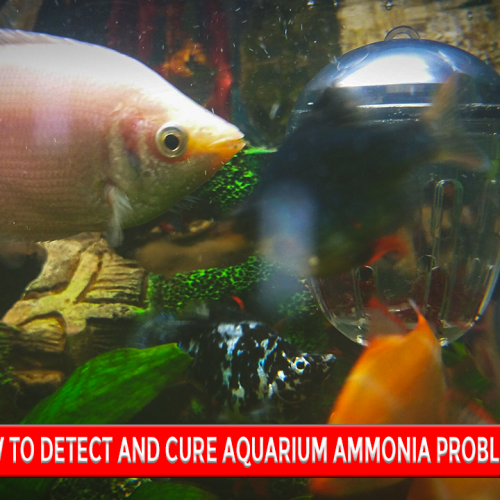Top 5 Aquarium Plants That Benefit Your Fish
Aquarium plants are more than just ornaments; they provide a vital role in setting up a balanced and healthy environment for the fish. They mimic natural habitats, provide oxygenation, and improve water quality, making plants not only beautify the tank but also enhance the well-being of its inhabitants. Let’s take a look at five of the best aquarium plants that benefit your fish and create a thriving underwater ecosystem.
1. Java Moss (Taxiphyllum barbieri)
 It is extremely hardy and versatile; Java Moss can make it in any water condition and can grow on rocks, driftwood or substrate. This favored plant among most aquarists is enjoyed by fry and smaller species. Dense and fluffy structure offers a good hiding place for the fish.
It is extremely hardy and versatile; Java Moss can make it in any water condition and can grow on rocks, driftwood or substrate. This favored plant among most aquarists is enjoyed by fry and smaller species. Dense and fluffy structure offers a good hiding place for the fish.
- It conceals spaces for fry and intimidated fish, thus protecting them from being eaten by larger tank inhabitants.
- It acts as a natural filter by absorbing excess nutrients, thereby reducing harmful nitrates and preventing the growth of algae.
The plant can survive in both low and high lighting with less attention needed; perfect for breeding tanks or community aquariums.
2. Amazon Sword (Echinodorus spp.)
 It’s quite the beauty when an aquarium has the Amazon Sword at its center. Its large and glossy, green leaves are a beautiful ornament for larger fish tanks containing cichlids, tetras, and more, for the reasons that it gives shade and a place to hide.
It’s quite the beauty when an aquarium has the Amazon Sword at its center. Its large and glossy, green leaves are a beautiful ornament for larger fish tanks containing cichlids, tetras, and more, for the reasons that it gives shade and a place to hide.
Fish Benefits
- Place of Retreat: Shades or a hiding place for fish for relief from stress.
- Water Quality Improved: Nitrates and toxins that cause imbalance in water will be absorbed by the plant, and the water will be cleaner.
Although Amazon Swords need a nutrient-rich substrate and moderate lighting to thrive, the benefits that they produce for fish and the overall ecosystem of the tank make all the effort worthwhile.
3. Anubias Barteri
 Anubias Barteri is an unpretentious plant for beginner aquarists and old professionals as well. This slow-growing aquatic does not need any supplementary CO₂ or strong lighting to flourish, making it one of the best low-tech plants for aquariums. It has thick, hard leaves that won’t be eaten by fish like goldfish and cichlids, which often graze on softer plants.
Anubias Barteri is an unpretentious plant for beginner aquarists and old professionals as well. This slow-growing aquatic does not need any supplementary CO₂ or strong lighting to flourish, making it one of the best low-tech plants for aquariums. It has thick, hard leaves that won’t be eaten by fish like goldfish and cichlids, which often graze on softer plants.
Fish Benefits:
- Hardiness: Leaves are very hardy.
- Surface for Grazing: Algae-eating fish, such as plecos and otocinclus, are fond of grazing on the algae that grow often on the leaves of Anubias.
Anubias Barteri can be attached to driftwood or rocks; hence it is a very flexible option for aquascaping.
4. Water Wisteria (Hygrophila difformis)
 Water Wisteria is a fast-growing plant with finely divided leaves, giving an underwater forest-like appearance. It tolerates various water conditions and is particularly prized for its ability to absorb excess nutrients, thereby improving water quality.
Water Wisteria is a fast-growing plant with finely divided leaves, giving an underwater forest-like appearance. It tolerates various water conditions and is particularly prized for its ability to absorb excess nutrients, thereby improving water quality.
Advantages for Fish
- Egg and Fry Shelter: The dense foliage provides a safe area for fish eggs and young fry.
- Oxygenation: Rapid growth increases oxygen production, which promotes a healthier environment.
Water Wisteria thrives in different lighting conditions, making it suitable for most aquariums. Its fast growth also helps outcompete algae, keeping your tank clean and balanced.
5. Hornwort (Ceratophyllum demersum)
 Hornwort is a floating plant that thrives without requiring substrate or complex care. Its feathery texture and rapid growth make it an excellent oxygenator for fish tanks. Hornwort is especially useful in tanks with fry or small fish, as it provides ample hiding spots.
Hornwort is a floating plant that thrives without requiring substrate or complex care. Its feathery texture and rapid growth make it an excellent oxygenator for fish tanks. Hornwort is especially useful in tanks with fry or small fish, as it provides ample hiding spots.
Benefits for Fish:
- Protection: Fry and smaller fish use its dense foliage as a refuge from predators.
- Algae Control: Competes with algae for nutrients, therefore reducing algae growth in the tank.
Hornwort is fast growing under moderate to high light and adapts to most water conditions. This is an excellent addition to aquariums that need low-maintenance yet effective plants.
Why Live Plants Are Important for Aquariums
Adding live plants to your aquarium provides several benefits:
- Natural Filtration: Plants absorb harmful toxins like ammonia, nitrites, and nitrates, maintaining water quality.
- Oxygenation: Live plants create oxygen in the process of photosynthesis, making the environment very healthy for fish.
- Reducing Stress: Plants give fish shelter and resemble natural habitats, which reduces stress.
- Aesthetic Value: They beautify your tank, giving it a vibrant and dynamic focal point.
Conclusion:
Aquarium plants like Java Moss, Amazon Sword, Anubias Barteri, Water Wisteria, and Hornwort not only enhance the visual appeal of your tank but also play a critical role in ensuring the health and happiness of your fish. Whether you’re a beginner or an experienced aquarist, incorporating these plants into your aquarium will create a thriving, balanced ecosystem.
FAQs (frequently-asked questions)
Yes, species such as Java Moss and Anubias Barteri love low-light setups, so they’re ideal for low-tech setups.
Some require liquid fertilizers or nutrient-rich substrates, especially those with a high demand, such as Amazon Sword.
Yes, they will outcompete algae for nutrients and, therefore, keep the algae in check.
Absolutely, they are safe for most species of fish.
Most aquarium plants are safe, but certain species like goldfish and cichlids may nibble on softer plants. Choose hardy plants for these tanks.
Ensure proper lighting, fertilization, and CO₂ levels, and regularly trim dead or decaying leaves to maintain healthy plants.




